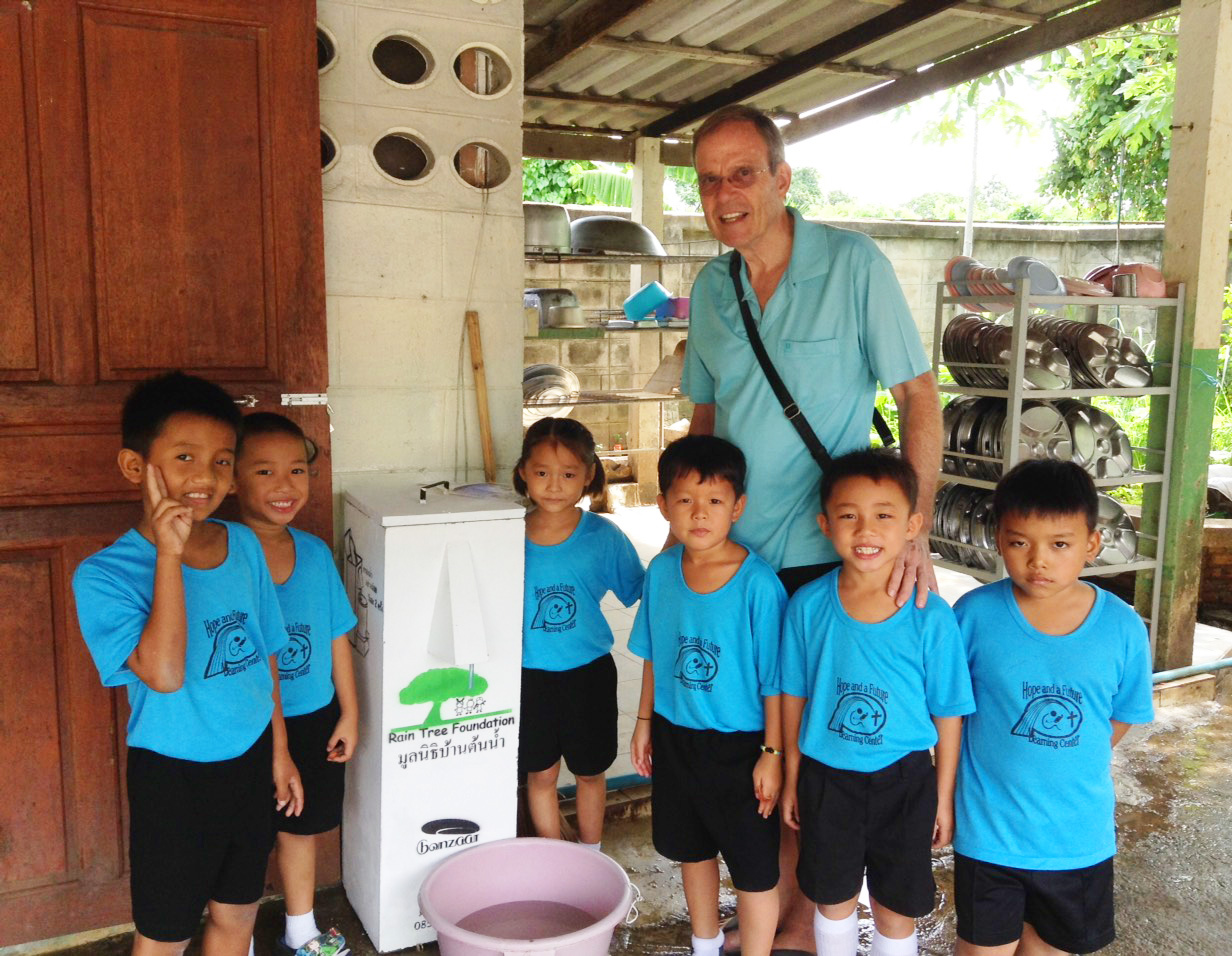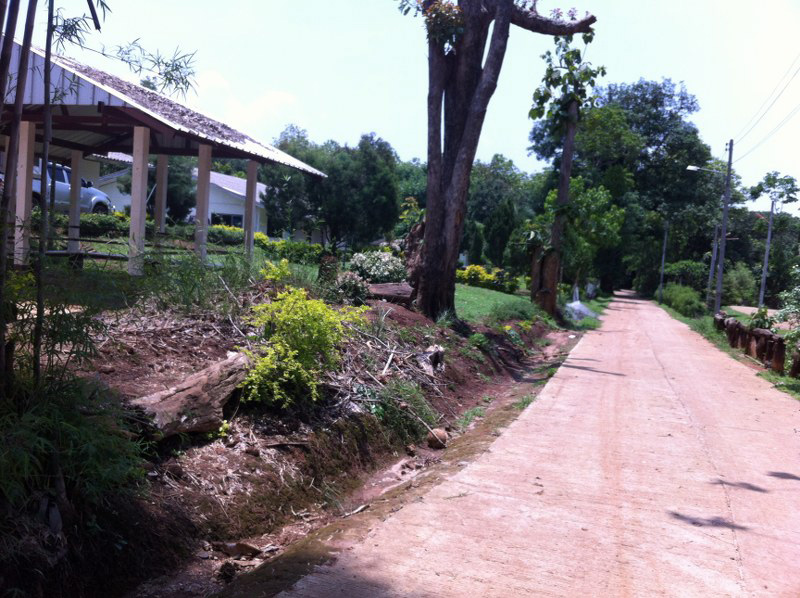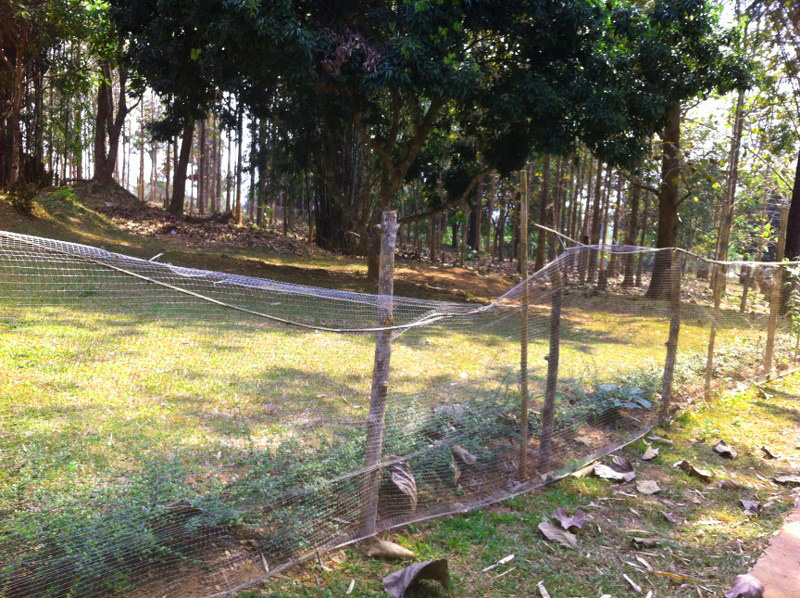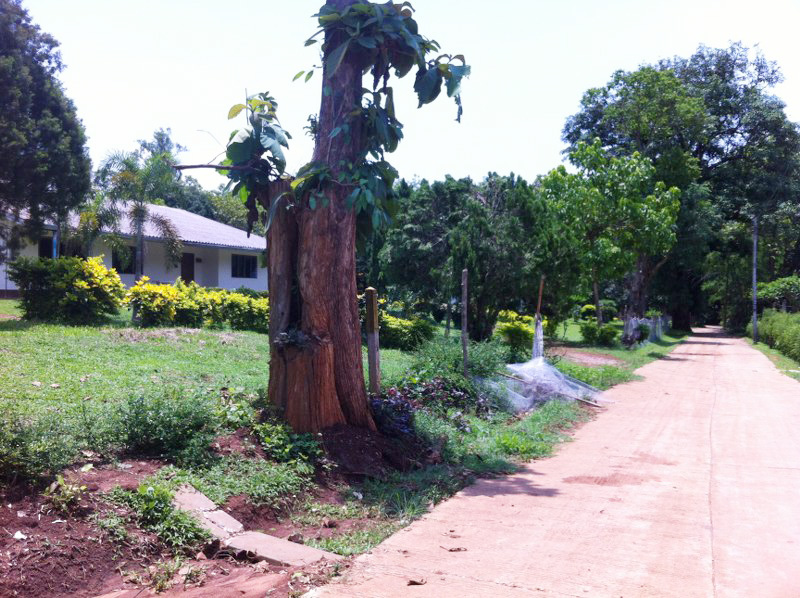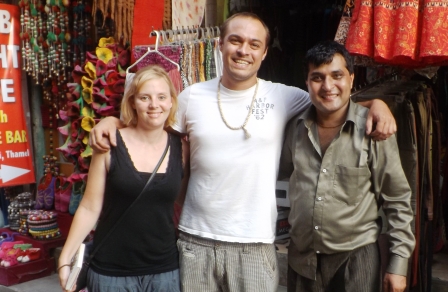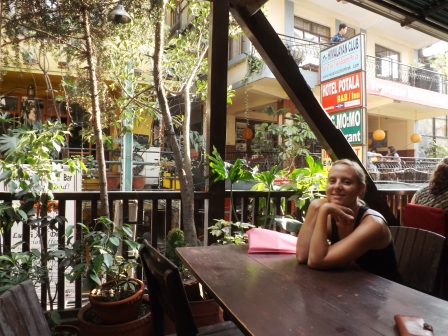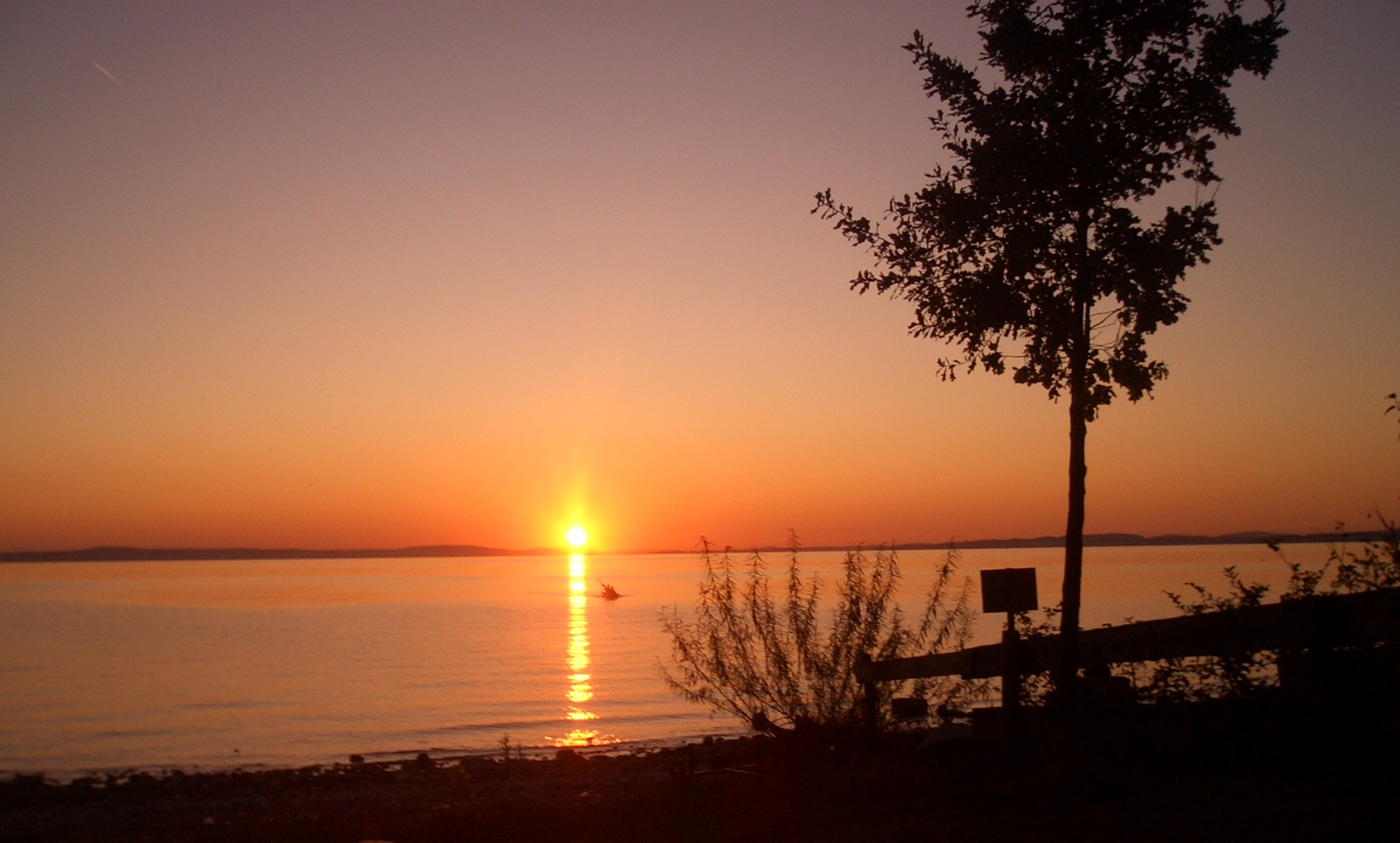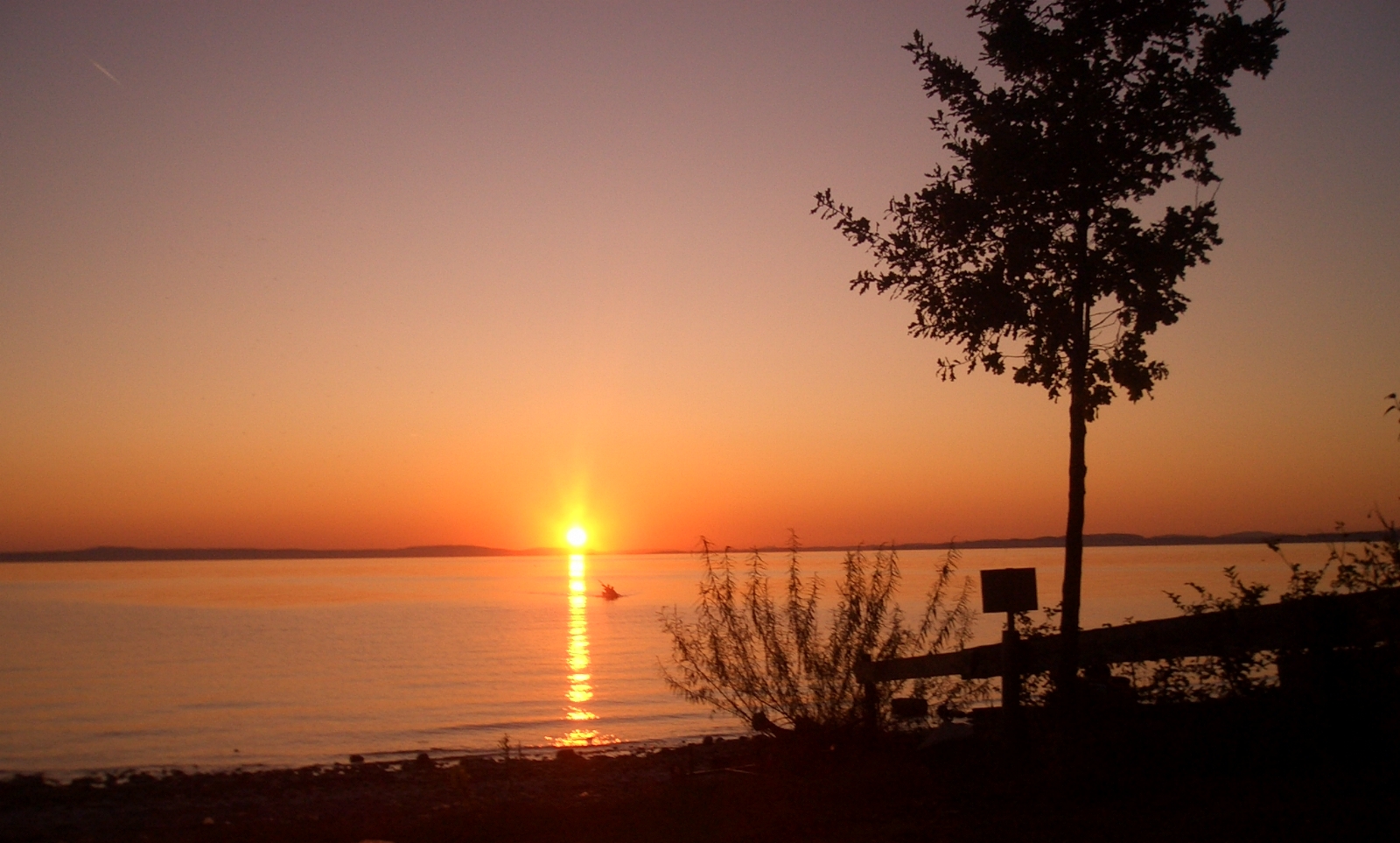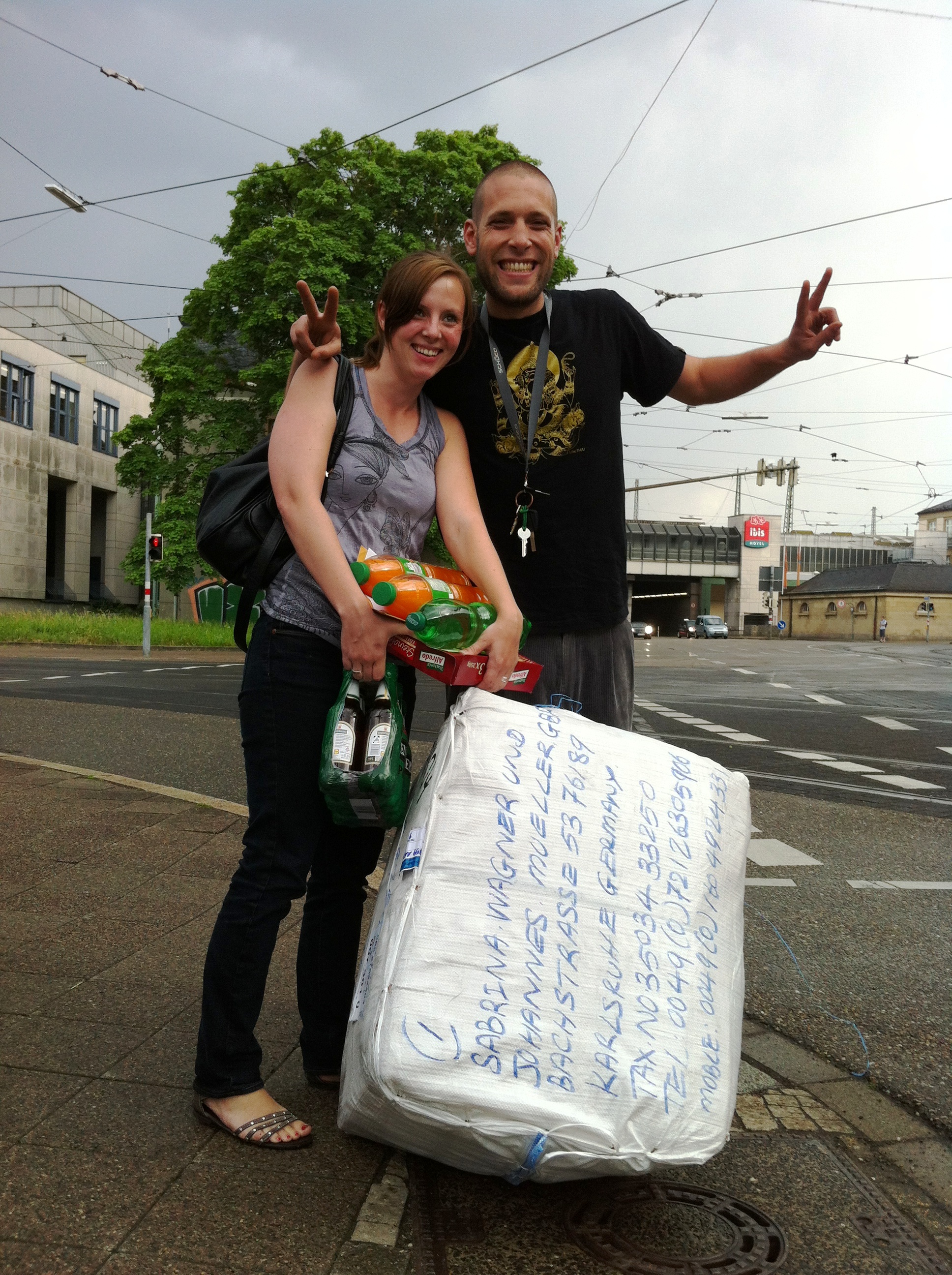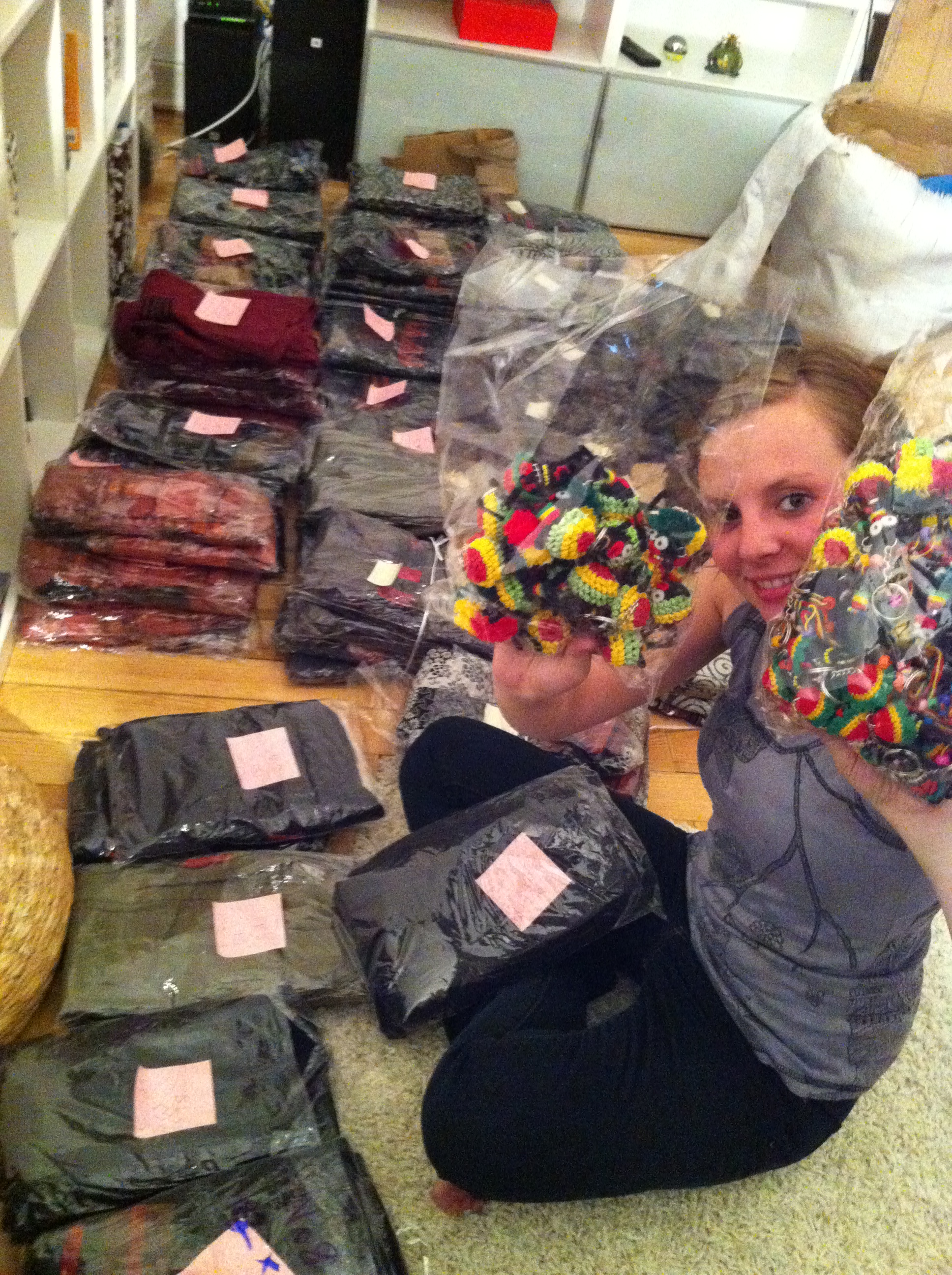[:de]Die gute schwäbische Weisheit „Schaffe, schaffe, Häusle bauen“ wird in Nordthailand verdreht – oder haben wir in Deutschland etwas falsch verstanden? Terminologisch korrekt müsste die Weisheit in Deutschland doch lauten: Arbeiten, arbeiten und noch ein kleines bisschen mehr arbeiten, um ausreichend Geld zu haben, um kreditwürdig zu sein, um damit den Traum vom Eigenheim in den folgenden 30 Jahren bei der Bank des Vertrauens abzuzahlen, der für die Bauarbeiter benötigt wird, um ein Haus für dich zu bauen ….
Was dabei verloren geht? Zeit, Du – und natürlich der Spaß an der Sache.
Wir haben nach einem pragmatischeren Ansatz gesucht und sind fündig geworden. Unsere Reise führt uns nach Mae Tang in die Nähe des Mae Ngat Staudamms, etwa 2 Stunden nördlich von Chiang Mai, Thailand. Hier hat Jon Jandai (Phi Joe) vor ca. 20 Jahren die Eco Community Pun Pun gegründet und ist der Pionier im Lehmhausbau in Thailand.
Laut Phi (die thailändische Bezeichnung für großer Bruder) Joe ist Lehmhausbau die einfachste Art und Weise ein Haus zu bauen, jeder Mensch kann es. Erwachsene können es, Kinder können es – du kannst es! Alles was du brauchst ist dein Körper…und wenn wir nun ein Haus in weniger als einem Jahr und für nicht mal 10.000 Euro bauen, haben wir uns nach kurzem Überschlagen knapp 29 Jahre gespart. Wie man 29 Jahre Lebenszeit in Euro gegenrechnen will ist dabei wohl eher eine schwierige und recht philosophische Frage :D.

Das Ambiente und die Atmosphäre hier sind unbeschreiblich. Den Platz, den sich Nate und Phi Yao für Ihr Lehmhaus ausgesucht haben ist malerisch. Umgeben von Reisfeldern und den südlichsten Ausläufern des Himalayas ist jeder Sonnenaufgang und -untergang ein Erlebnis. Der Naturbadesee/Wasserspeicher, der schon letztes Jahr angelegt wurde, tut dem ganzen keinen Abbruch. Junge und wissbegierige Menschen aus über 20 Ländern sind gekommen, um zu lernen und den beiden beim Hausbau zu helfen.

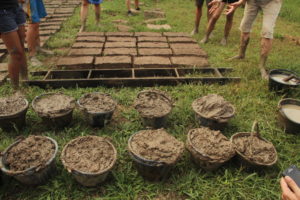
Zu Beginn stehen wir nun in einem riesen Lehmloch (ehemaliges Reisfeld), dessen Inhalt in ein Einfamilienhaus verwandelt werden soll. Wie soll das gehen? Ganz einfach: Lehm, getrocknete Reisschalen, Sand und Wasser vermischen und weichtreten. Die cremige Erdmasse wird dann in Formen gegossen, zum Trocknen aufgestellt und beobachtet. Gibt es große Risse beim Sonnentrocknen der Ziegelsteine ist der Lehmgehalt zu hoch. Wenn sie bei der Brechprobe am Boden in tausende Einzelteile zerbersten muss am Sandgehalt gearbeitet werden. Lokale Bodenbedingungen sind überall auf der Erde unterschiedlich und Ausprobieren, Trial and Error, sind der einzige Weg zum Erfolg. Wohlgemerkt haben wir am Ende unserer Zeit mehr als 6000 Lehmziegel verbaut und schnell ein gutes Gefühl für die perfekte Mischung bekommen.

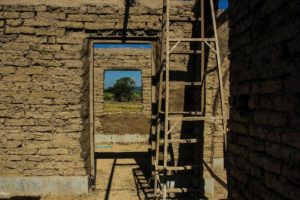
Stein auf Stein werden allmählich die Wände hochgezogen. Als Bindemasse wird ein Mörtel aus Lehm, Sand und Reisschalenmix verwendet. Super interessant war es auch die 5 Meter Breiten und über 3 Meter hohen Torbögen anzulegen. Hier wurde zuerst eine Holzkonstruktion gebastelt, die die Lehmziegelsteine hält bis sie sich durch ihr Eigengewicht selbst stützen und stärken. Eine Schnur und ein Nagel zum Zentrieren des Bogens und ein paar Steine für die Winkelanpassung der Lehmziegelsteine sind genug, um so ein Meisterwerk zu bauen. Auf den letzten Stein sind wir natürlich besonders stolz.
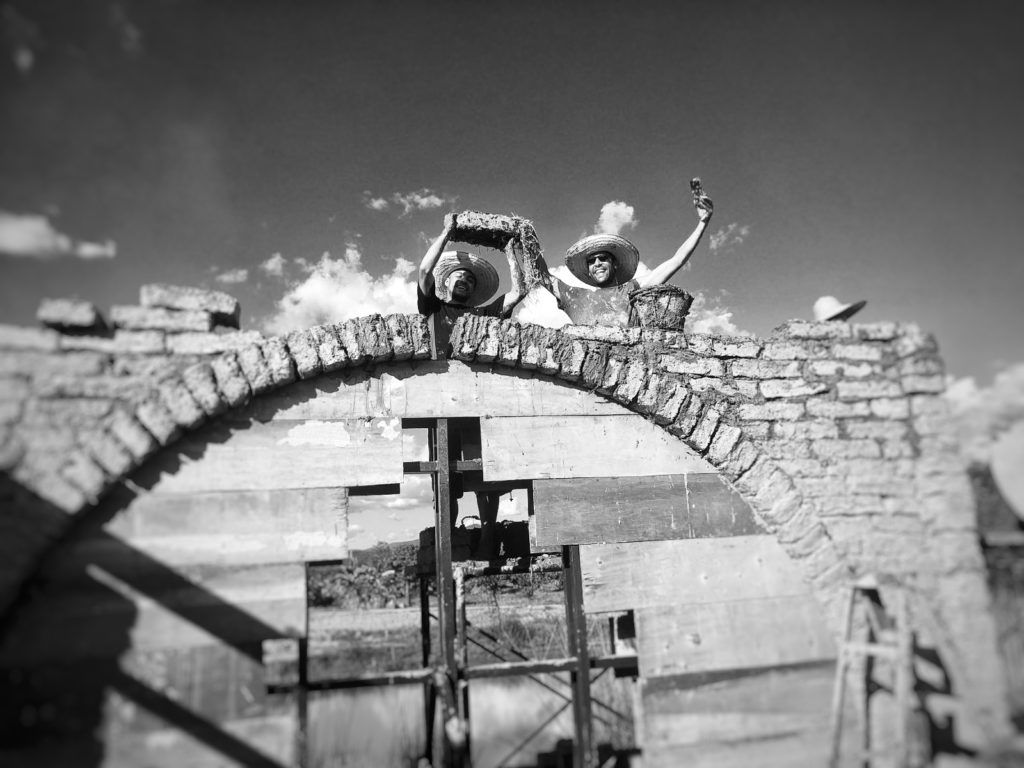
Nach knapp zwei Wochen, haben wir es geschafft, die Hälfte des Hauses fertig zu stellen und dazu gelernt, wie man Putz und Lehmfarbe aus den obigen Bestandteilen mischt. Aus praktischen Gründen wurden nicht alle Elemente des Hauses aus naturnahen und lokalen Materialien gebaut. Erfahrungsgemäß machen es Termiten in Thailand unmöglich einen Lehmboden und Lehmfundament, oder eine langlebige Dachkonstruktion aus Holz anzulegen. Deswegen haben wir hier zu Beton für das Fundament bzw. Metall für die Dachkonstruktion gegriffen. Wir von virblatt sind begeistert diese alte Häuserbauweise erlernt zu haben. Es war ein unbeschreibliches Ereignis in unseren selbst gebauten Naturwänden zu stehen, die kontinuierlich Wasser (Luftfeuchtigkeit) aber auch Hitze schnell aufnehmen und wieder abgeben und zu einem super angenehmen Raumklima führen. Wir sind von der Möglichkeit beeindruckt, dass jeder Mensch seine eigenen vier Wände aus natürlichen Ressourcen errichten kann. Und wir sind dankbar dafür, all die liebevollen und interessanten Menschen kennen gelernt zu haben. Es ist unbeschreiblich, was für eine enge Beziehung man mit Menschen und Materialen in kurzer Zeit aufbaut, wenn man gemeinsam an einem so wertvollen Projekt arbeitet: Wir haben ein Haus gebaut!
Life is easy!
denk drüber nach.
virblatt[:nl]Vanuit Zuid-Duitsland kregen we één ding te horen: „Werk hard, werk hard, bouw je eigen huisje“. Echter, deze wijsheid lijkt te zijn verdraaid in Noord-Thailand – of hebben we verkeerd begrepen iets? De wijsheid in Duitsland moet terminologisch correct zijn: hard werken, heel hard werken en misschien zelfs nog een beetje harder werken om genoeg geld te hebben om kredietwaardig te zijn om de lening af te betalen voor de komende 30 jaar die u nodig hebt voor de bouwbedrijf dat uw droom van uw huis te bouwen.
Wat gaat er verloren? Tijd, jou – en natuurlijk het plezier.
We zochten naar een meer pragmatische aanpak en vonden wat we zochten. Onze reis brengt ons naar Mae Tang in de buurt van de Mae Ngat Dam, ongeveer 2 uur noordelijk van Chiang Mai, Thailand. Jon Jandai (Phi Joe) richtte ongeveer 20 jaar geleden de Eco Community Pun Pun op en is de pionier in de kleihuis bouw in Thailand.
Volgens Phi (de Thaise naam voor grote broer) Joe is het bouwen van een lemen huis de makkelijkste manier om een huis te bouwen, iedereen kan het. Volwassenen kunnen het, kinderen kunnen het – jij kunt het! Alles wat je nodig hebt is je lichaam… en als we een huis bouwen in minder dan een jaar en voor minder dan 10.000 USD, hebben we 29 jaar bespaard. Hoe men 29 levensjaren in dollars wil compenseren is een heel moeizame en filosofische vraag.

Laten we dus aan de slag gaan voordat we meer tijd verliezen en een nieuw kleihuis bouwen voor Nate en Phi Yao.
De plaats Nate en Phi Yao hebben gekozen voor hun mudhouse is schilderachtig. Omringd door rijstvelden en de zuidelijkste uitlopers van de Himalaya, zijn elke zonsopgang en zonsondergang een belevenis. Het vorig jaar gebouwde natuurlijke zwemmeer/waterreservoir creëert een onbeschrijflijke sfeer. Jonge en nieuwsgierige mensen uit meer dan 20 landen zijn gekomen om te leren en hen te helpen hun nieuwe huis te bouwen.


Aanvankelijk staan we in een enorm lemen gat (voormalig rijstveld), waarvan de inhoud getransformeerd wordt tot een eengezinswoning. Hoe kun je dat doen? Heel eenvoudig: klei, gedroogde rijstschillen, zand en water mengen tot het zacht wordt. De romige massa aarde wordt vervolgens in vormen gegoten, opgezet om te drogen en moet in acht worden genomen. Als er grote scheuren zijn wanneer de stenen in de zon drogen, zit er te veel klei in het materiaal. Als ze tijdens de verbrijzelingstest op de grond in duizenden afzonderlijke delen breken, moet de hoeveelheid zand worden bewerkt. Lokale bodemomstandigheden zijn overal ter wereld verschillend en trial and error is de enige manier voor succes. Aan het eind van de tijd hebben we meer dan 6.000 bakstenen gemaakt en al snel een goed gevoel voor de perfecte mix.


Aan het eind van de tijd hebben we meer dan 6.000 bakstenen gemaakt en al snel een goed gevoel voor de perfecte mix.
Vervolgens, bak voor bak, worden de muren geleidelijk gebouwd. Als bindmiddel wordt een mortel van klei, zand en een rijstkafsmengsel gebruikt. Ook de 5 meter brede en 3 meter hoge bogen waren zeer interessant om te bouwen. Eerst werd een houten constructie gemaakt, die de bakstenen vasthoudt tot ze zichzelf door hun eigen gewicht ondersteunen en versterken. Een touw en een spijker voor het centreren van de boog en een paar stenen voor het aanpassen van de hoek van de bakstenen zijn genoeg om zo’n meesterwerk te bouwen. Natuurlijk zijn we bijzonder trots op de laatste steen.

Na bijna twee weken zijn we erin geslaagd om de helft van het huis af te maken en hebben we geleerd hoe we pleister- en kleiverf moeten mengen met de bovenstaande componenten. Om praktische redenen zijn niet alle elementen van het huis gemaakt van natuurlijke en lokale materialen. De ervaring heeft geleerd dat termieten in Thailand het onmogelijk maken om een leemachtige bodem en fundering of een duurzame dakconstructie van hout te leggen. Daarom hebben we beton gebruikt voor de fundering en metaal voor de dakconstructie. Wij bij virblatt zijn blij te hebben geleerd deze oude manier van het bouwen van huizen. Het was een onbeschrijflijke gebeurtenis om in onze zelfgebouwde natuurlijke muren te staan, die voortdurend water (vochtigheid) en warmte absorberen en afstaan om het hele jaar door een aangenaam binnenklimaat te hebben. We zijn onder de indruk van de mogelijkheid dat iedereen zijn eigen vier muren kan bouwen uit natuurlijke bronnen. En we zijn dankbaar dat we alle liefdevolle en interessante mensen hebben ontmoet tijdens deze workshop. Het is onbeschrijflijk wat een hechte relatie je in korte tijd opbouwt met mensen en materialen als je samenwerkt aan zo’n waardevol project: We hebben een huis gebouwd!
Het leven is gemakkelijk!
Denk erover na.
virblatt[:en]Coming from the southern part of Germany we were taught one thing: “Work hard, work hard, build your own little house.” However, this wisdom seems to be twisted in northern Thailand – or have we misunderstood something? The wisdom in Germany should be terminologically correct: Work hard, work very hard and maybe work even a little bit harder to have enough money to be creditworthy to pay off the loan for the next 30 years that you need for the construction company that will build your dream of your home.
What is lost in the process? Time, you – and of course the fun.
We were looking for a more pragmatic approach and found what we were looking for. Our trip takes us to Mae Tang near the Mae Ngat Dam, about 2 hours north of Chiang Mai, Thailand. Jon Jandai (Phi Joe) founded the Eco Community Pun Pun about 20 years ago and is the pioneer in clay house construction in Thailand.
According to Phi (the Thai name for big brother) Joe, building a mud house is the easiest way to build a house, anyone can do it. Adults can do it, children can do it – you can do it! All you need is your body…and if we build a house in less than a year and for less than 10,000 USD, we have saved almost 29 years. How one wants to offset 29 years of life in Dollars is quite a difficult and philosophical question.

So let´s get started before we lose more time and build a new clay house for Nate and Phi Yao.
The place Nate and Phi Yao have chosen for their mud house is picturesque. Surrounded by rice fields and the southernmost foothills of the Himalayas, every sunrise and sunset are an experience. The natural swimming lake/water reservoir, which was built last year, create an indescribable ambience. Young and inquisitive people from over 20 countries have come to learn and help them build their new home.


At the beginning we stand in a huge mud hole (former rice field), whose contents are to be transformed into a single-family house. How can you do that? Very simple: mix clay, dried rice husks, sand and water and tread until it becomes soft. The creamy earth mass is then poured into moulds, set up for drying and needs to be observed. If there are large cracks when the bricks are sun-drying, there is too much clay in the material. If they burst into thousands of individual parts during the crushing test on the ground, the proportion of sand must be worked on. Local soil conditions are different all over the world and trial and error is the only way to success. That being said, at the end of our time we made more than 6,000 clay bricks and quickly got a good feeling for the perfect mixture.


Then, brick by brick, the walls are gradually build. A mortar made of clay, sand and a rice husk mix is used as a binding agent. The 5-meter-wide and 3-meter-high arches were also very interesting to build. First a wooden construction was made, which holds the clay bricks until they support and strengthen themselves by their own weight. A string and a nail for centering the arc and a few stones for adjusting the angle of the clay bricks are enough to build such a masterpiece. Of course, we are particularly proud of the last stone.

After almost two weeks, we managed to finish half of the house and learned how to mix plaster and clay paint from the above components. For practical reasons, not all elements of the house were built from natural and local materials. Experience has shown that termites in Thailand make it impossible to lay a loamy soil and foundation, or a durable roof construction made of wood. That is why we have used concrete for the foundation and metal for the roof construction. We at virblatt are thrilled to have learned this old way of building houses. It was an indescribable event to stand in our self-built natural walls, which continuously absorb and release water (humidity) and heat to have a pleasant room climate all year round. We are impressed by the possibility that everyone can build their own four walls from natural resources. And we are grateful to have met all the loving and interesting people during this workshop. It is indescribable what a close relationship you build with people and materials in a short time when you work together on such a valuable project: We built a house!
Life is easy!
think about it.
virblatt[:fr]Venant du sud de l’Allemagne, on nous a appris une chose : „Travaillez dur, travaillez dur, construisez votre propre petite maison.“ Cependant, cette sagesse semble être tordue dans le nord de la Thaïlande – ou avons-nous mal compris quelque chose ? La sagesse en Allemagne devrait être correcte sur le plan terminologique : Travaillez dur, travaillez très dur et peut-être même un peu plus dur pour avoir assez d’argent pour être solvable pour rembourser le prêt pendant les 30 prochaines années dont vous avez besoin pour l’entreprise de construction qui construira ta maison de rêve.
Qu’est-ce qui est perdu dans le processus ? Le temps, toi – et bien sûr le plaisir.
Nous recherchions une approche plus pragmatique et avons trouvé ce que nous cherchions. Notre voyage nous emmène à Mae Tang près du barrage de Mae Ngat, à environ 2 heures au nord de Chiang Mai, Thaïlande. Jon Jandai (Phi Joe) a fondé l’Eco Community Pun Pun il y a environ 20 ans et est le pionnier de la construction de maisons en terre en Thaïlande.
Selon Phi (le nom thaïlandais pour grand frère) Joe, construire une maison en terre est la façon la plus facile de construire une maison, tout le monde peut le faire. Les adultes peuvent le faire, les enfants peuvent le faire – tu peux le faire ! Tout ce dont tu as besoin, c’est de ton corps… et si nous construisons une maison en moins d’un an et pour moins de 10.000 USD, nous avons économisé presque 29 ans. La façon dont on veut compenser 29 ans de vie en dollars est une question difficile et philosophique.

Alors commencons avant de perdre plus de temps et construisions une nouvelle maison d’argile pour Nate et Phi Yao.
L’endroit que Nate et Phi Yao ont choisi pour leur maison en terre est pittoresque. Entouré de rizières et des contreforts les plus au sud de l’Himalaya, chaque lever et chaque coucher de soleil sont une expérience. Le lac de baignade naturel/réservoir d’eau, qui a été construit l’année dernière, crée une ambiance indescriptible. Des jeunes gens curieux et curieux de plus de 20 pays sont venus pour apprendre et les aider à construire leur nouveau foyer.


Au début, nous nous trouvons dans un immense trou de boue (ancienne rizière), dont le contenu doit être transformé en maison unifamiliale. Comment peux-tu faire ça ? Très simple : mélangez l’argile, les balles de riz séchées, le sable et l’eau et marchez jusqu’à ce qu’il devienne mou. La masse de terre crémeuse est ensuite versée dans des moules, mise en place pour le séchage et doit être observée. S’il y a de grandes fissures lorsque les briques sèchent au soleil, il y a trop d’argile dans le matériau. S’ils éclatent en milliers de pièces au cours de l’essai de concassage au sol, la proportion de sable doit être travaillée. Les conditions locales du sol sont différentes dans le monde entier et les essais et erreurs sont le seul moyen d’y parvenir. Cela dit, à la fin de notre séjour, nous avons fabriqué plus de 6.000 briques d’argile et nous avons rapidement trouvé le mélange parfait.


Puis, brique par brique, les murs se construisent progressivement. Un mortier composé d’argile, de sable et d’un mélange de balle de riz est utilisé comme liant. Les arcs de 5 mètres de large et de 3 mètres de haut étaient également très intéressants à construire. Tout d’abord, une construction en bois a été réalisée, qui maintient les briques d’argile jusqu’à ce qu’elles s’appuient et se renforcent par leur propre poids. Une ficelle et un clou pour centrer l’arc et quelques pierres pour ajuster l’angle des briques d’argile suffisent pour construire un tel chef-d’œuvre. Bien sûr, nous sommes particulièrement fiers de la dernière pierre.

Après presque deux semaines, nous avons réussi à finir la moitié de la maison et nous avons appris à mélanger le plâtre et la peinture à l’argile avec les composants ci-dessus. Pour des raisons pratiques, tous les éléments de la maison n’ont pas été construits avec des matériaux naturels et locaux. L’expérience a montré qu’en Thaïlande, les termites rendent impossible la pose d’un sol et d’une fondation loameux, ou d’une construction de toit durable en bois. C’est pourquoi nous avons utilisé du béton pour les fondations et du métal pour la construction du toit. Nous, virblatt, sommes ravis d’avoir appris cette vieille façon de construire des maisons. C’était un événement indescriptible de se tenir debout dans nos murs naturels construits par nos soins, qui absorbent et libèrent continuellement de l’eau (humidité) et de la chaleur pour avoir un climat ambiant agréable toute l’année. Nous sommes impressionnés par la possibilité que chacun puisse construire ses propres murs à partir de ressources naturelles. Et nous sommes reconnaissants d’avoir rencontré toutes les personnes aimantes et intéressantes pendant cet atelier. Il est indescriptible de voir la relation étroite que vous établissez avec les gens et les matériaux en si peu de temps lorsque vous travaillez ensemble sur un projet aussi précieux : On a construit une maison !
La vie est facile !
penses-y.
virblatt
[:it]Provenendo dal sud della Germania ci è stata insegnata una cosa: „Lavora sodo, lavora sodo, costruisci la tua casetta“. Tuttavia, questa saggezza sembra essere contorta nel nord della Thailandia – o abbiamo frainteso noi qualcosa? La nozione in Germania dovrebbe essere terminologicamente corretta: lavorare sodo, lavorare sodo e forse anche un po‘ più duro per avere abbastanza soldi per ottenere un credito in banca che dovrai ripagare per i prossimi 30 anni, ma è cio’ di cui hai bisogno per pagare l’impresa edile che costruirà la tua casa dei sogni.
Che cosa si perde nel processo? Tempo, tu stesso – e naturalmente il divertimento.
Eravamo alla ricerca di un approccio più pragmatico e abbiamo trovato ciò che stavamo cercando. Il nostro viaggio ci porta a Mae Tang vicino alla diga di Mae Ngat, circa 2 ore a nord di Chiang Mai, in Thailandia. Jon Jandai (Phi Joe) ha fondato l’Eco Community Pun Pun circa 20 anni fa ed è il pioniere nella costruzione di case in argilla in Thailandia.
Secondo Phi (in thai significa ‘fratello maggiore’) Joe, esiste il modo più semplice per costruire una casa e chiunque può farlo. Gli adulti possono farlo, i bambini possono farlo – tu lo puoi fare! Tutto ciò di cui hai bisogno è il tuo corpo….e se ora costruissimo una casa in meno di un anno e per meno di 10000 dollari (salario minimo di 8,50 dollari/ora per gli stagisti in regola) avremmo risparmiato dopo un breve calcolo, soli 29 anni. Ora, come si puo’ calcolare 29 anni di vita in dollari è una questione filosofica molto difficile :D.

Sei mai stato a Pai?
L’ambiente e l’atmosfera sono indescrivibili. Il luogo che Nate e Phi Yao hanno scelto per la loro casa di fango è pittoresco. Circondato da risaie e dalle montagne dell’Himalaya come sfondo, ogni alba e tramonto sono un’esperienza. Il laghetto balneare naturale / bacino idrico, che era già stato costruito l’anno scorso, non demolisce tutto. Giovani provenienti da oltre 20 paesi del mondo sono venuti per imparare e per aiutarli a costruire la loro casa.


All’inizio ci siamo trovati in un enorme buco di fango (ex risaia), che sarebbe dovuto divenire una casa indipendente. Come funziona? Molto semplice: Bisogna mescolare l’argilla, la lolla di riso essiccata, la sabbia e l’acqua per poi ammorbidire il tutto. La massa di terra cremosa viene poi versata in degli stampi, messa ad asciugare e poi controllata. Se ci sono grandi crepe quando i mattoni sono asciutti e messi ad esiccare sotto al sole, l’argilla contenuta nella miscela è troppa. Se durante il test di frantumazione a terra, il contenuto di sabbia deve essere lavorato su migliaia di pezzi singoli. Le condizioni locali del suolo variano in tutto il mondo e la prova e l’errore sono l’unico modo per ottenere il successo. Attenzione, per terminare il nostro lavoro abbiamo usato più di 6000 mattoni d’argilla e abbiamo avuto sin da subito buon occhio per ottenere la miscela perfetta.


Mattone dopo mattone, i muri si sono poi gradualmente elevati. Come legante è stato utilizzata una miscela modificata di argilla, sabbia e lolla di riso. Molto interessante è stato creare gli archi di 5 metri di larghezza e oltre i 3 metri di altezza. Qui, per poter effettuare questo passaggio, è stata fatta una costruzione in legno, questa sostiene i mattoni fatti di argilla fino a quando non si rafforzano e si bilanciano col proprio peso. Una corda e un chiodo per centrare l’arco, alcune pietre per regolare l’angolo dei mattoni di argilla, sono sufficienti per costruire un tale capolavoro. Naturalmente siamo particolarmente orgogliosi dell’ultima pietra messa.

Dopo circa due settimane, siamo riusciti a finire metà della casa e abbiamo imparato a mescolare l’intonaco e la vernice argillosa fatta degli stessi ingredienti prima citati. Per motivi pratici, non tutti gli elementi utilizzati per la costruzione della casa sono materiali naturali e locali. L’esperienza ha dimostrato che le termiti in Thailandia non agevolano la costruzione delle fondamenta di argilla e di un tetto di legno, e per questo motivo è stato scelto il cemento e il metallo. Noi di virblatt siamo entusiasti di scoprire questo vecchio metodo di costruzione delle case e di stare tra le pareti naturali che assorbono continuamente l’acqua (umidità), ma che si riscaldano rapidamente rilasciando un clima piacevole interno. Siamo entusiasti del fatto che ogni essere umano puo’ costruire le proprie quattro mura senza doversi strozzare con un debito o mutuo per tutta la vita. E siamo grati di aver conosciuto tutte le persone che pensano e vivono come noi, per il tipo di rapporto che si crea con le persone, come si costruisce con se stessi e con i materiali che si usano quando si lavora su un progetto così prezioso insieme.
La vita è semplice!
Pensaci.
virblatt[:es]Viniendo del sur de Alemania nos enseñaron una cosa: „Trabaja duro, trabaja duro, construye tu propia casita“. Sin embargo, esta sabiduría parece estar torcida en el norte de Tailandia, ¿o hemos malinterpretado algo? La sabiduría en Alemania debe ser terminológicamente correcta: Trabajar duro, trabajar muy duro y tal vez trabajar un poco más duro para tener suficiente dinero para ser solvente para pagar el préstamo durante los próximos 30 años que usted necesita para la empresa constructora que construirá tu casa soñada.
¿Qué se pierde en el proceso? El tiempo, tú y, por supuesto, la diversión.
Buscábamos un enfoque más pragmático y encontramos lo que estábamos buscando. Nuestro viaje nos lleva a Mae Tang, cerca de la presa de Mae Ngat, a unas 2 horas al norte de Chiang Mai, Tailandia. Jon Jandai (Phi Joe) fundó la Comunidad Eco Pun Pun hace unos 20 años y es el pionero en la construcción de casas de barro en Tailandia.
Según Phi (en tailandés significa hermano mayor) Joe, construir una casa de barro es la forma más fácil de construir una casa, cualquiera puede hacerlo. Los adultos pueden hacerlo, los niños pueden hacerlo – ¡tú puedes hacerlo! Todo lo que necesitas es tu cuerpo… y si construimos una casa en menos de un año y por menos de 10.000 dólares, hemos ahorrado casi 29 años. Cómo se quiere compensar 29 años de vida en dólares es una cuestión bastante difícil y filosófica.

Así que let´s empezar antes de que perdamos más tiempo y construir una nueva casa de arcilla para Nate y Phi Yao.
El lugar que Nate y Phi Yao han elegido para su casa de barro es pintoresco. Rodeado de arrozales y de las estribaciones más meridionales del Himalaya, cada salida y puesta de sol es una experiencia. El lago natural de baño/embalse de agua, que fue construido el año pasado, crea un ambiente indescriptible. Jóvenes e inquisitivos de más de 20 países han venido a aprender y a ayudarles a construir su nuevo hogar.


Al principio nos encontramos en un enorme agujero de barro (antiguo arrozal), cuyo contenido se va a transformar en una casa unifamiliar. ¿Cómo puedes hacer eso? Muy simple: mezcle la arcilla, la cáscara de arroz seca, la arena y el agua y pise hasta que se ablande. La masa de tierra cremosa se vierte en moldes, se prepara para el secado y debe ser observada. Si hay grandes grietas cuando los ladrillos se están secando al sol, hay demasiada arcilla en el material. Si se rompen en miles de piezas individuales durante la prueba de trituración en el suelo, se debe trabajar en la proporción de arena. Las condiciones locales del suelo son diferentes en todo el mundo y el ensayo y error es la única manera de lograr el éxito. Dicho esto, al final de nuestro tiempo hicimos más de 6.000 ladrillos de arcilla y rápidamente obtuvimos una buena sensación de la mezcla perfecta.


Luego, ladrillo sobre ladrillo, las paredes se van construyendo poco a poco. Como aglutinante se utiliza un mortero de arcilla, arena y una mezcla de cascarilla de arroz. Los arcos de 5 metros de ancho y 3 metros de altura también fueron muy interesantes de construir. Primero se hizo una construcción de madera, que sostiene los ladrillos de arcilla hasta que se sostienen y fortalecen por su propio peso. Una cuerda y un clavo para centrar el arco y algunas piedras para ajustar el ángulo de los ladrillos de arcilla son suficientes para construir una obra maestra. Por supuesto, estamos especialmente orgullosos de la última piedra.

Después de casi dos semanas, logramos terminar la mitad de la casa y aprendimos a mezclar yeso y pintura de arcilla de los componentes anteriores. Por razones prácticas, no todos los elementos de la casa fueron construidos con materiales naturales y locales. La experiencia ha demostrado que las termitas en Tailandia hacen imposible colocar un suelo y cimientos limosos, o una construcción de techo duradera hecha de madera. Por eso hemos utilizado el hormigón para la cimentación y el metal para la construcción del tejado. En virblatt estamos encantados de haber aprendido esta antigua forma de construir casas. Fue un acontecimiento indescriptible estar en nuestras paredes naturales autoconstruidas, que absorben y liberan continuamente agua (humedad) y calor para tener un clima ambiental agradable durante todo el año. Estamos impresionados por la posibilidad de que cada uno pueda construir sus propias cuatro paredes con recursos naturales. Y estamos agradecidos de haber conocido a todas las personas cariñosas e interesantes durante este taller. Es indescriptible la estrecha relación que se establece con las personas y los materiales en poco tiempo cuando se trabaja en un proyecto tan valioso: Construimos una casa!
La vida es fácil!
Piénsalo.
virblatt[:]


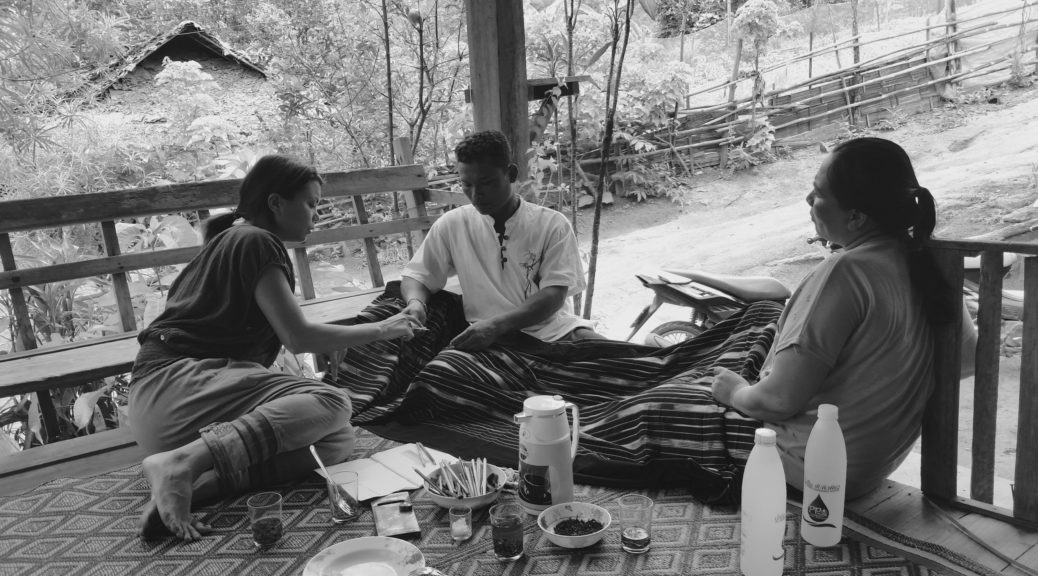
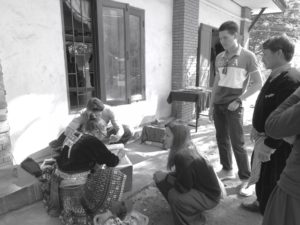
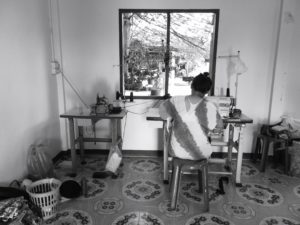
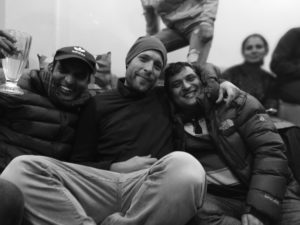

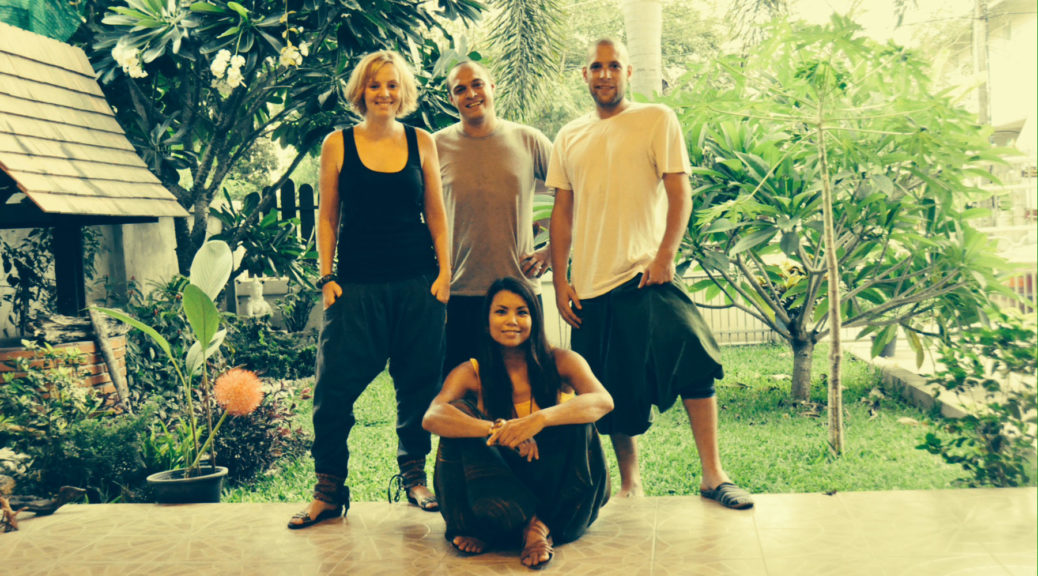
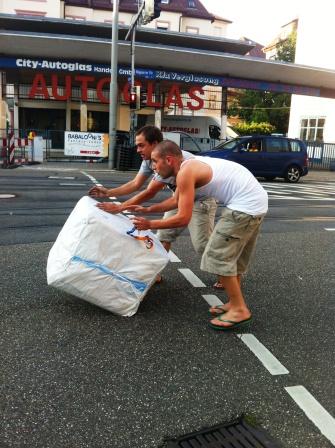
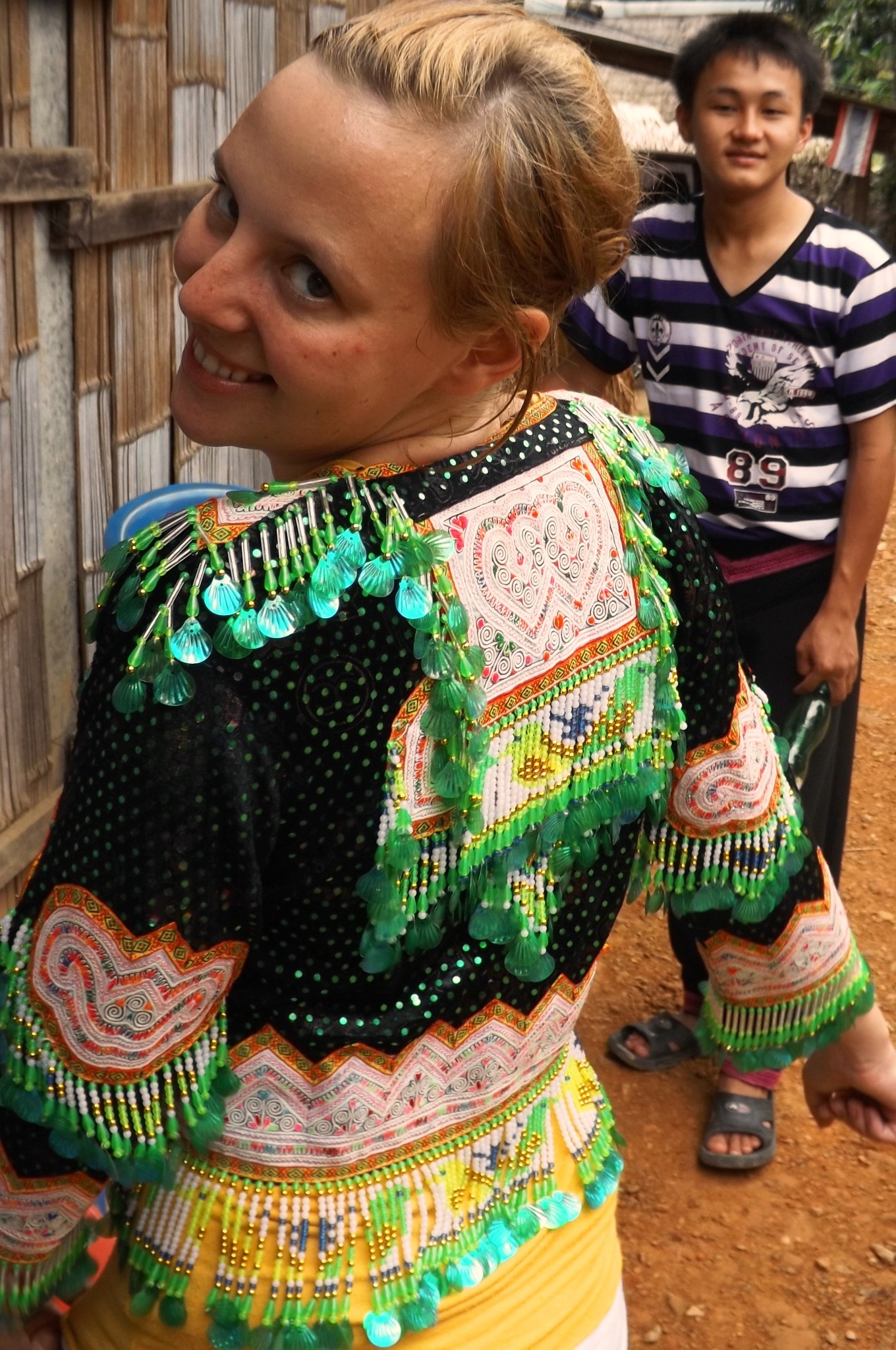
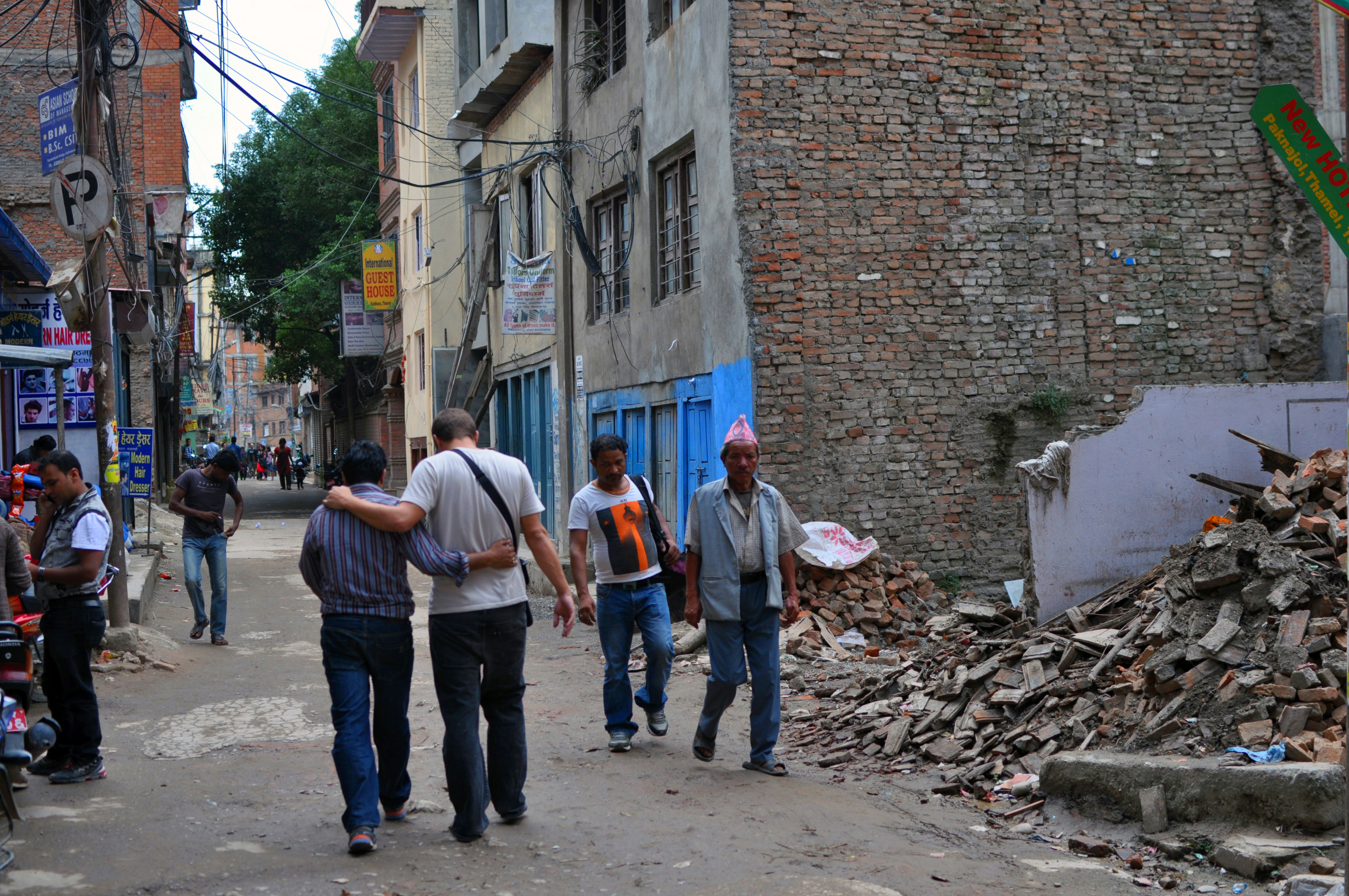
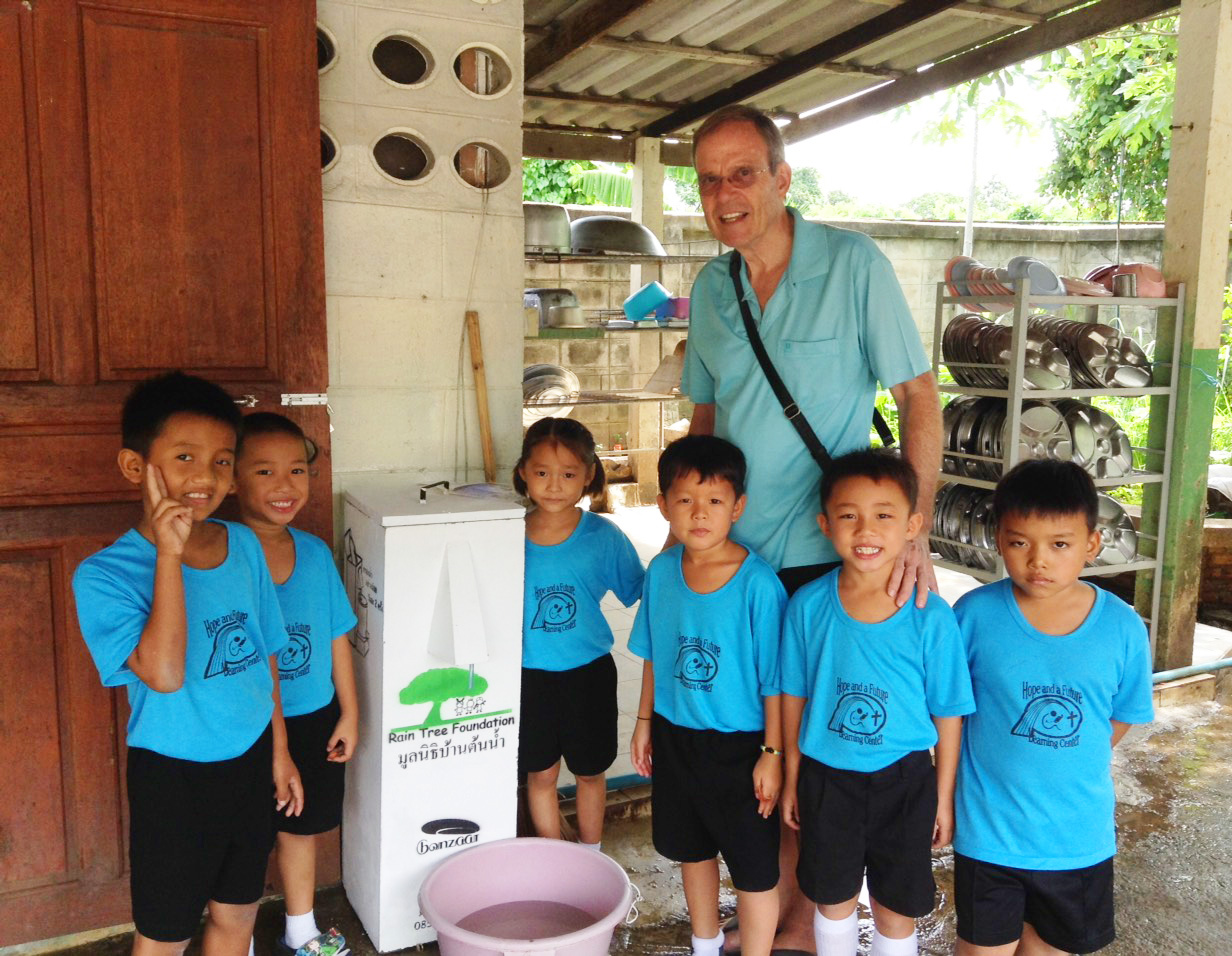
 Mit der wunderbaren Funktion den Einkaufsbetrag in unserem Online Shop für Haremshosen und Alternative Bekleidung auf
Mit der wunderbaren Funktion den Einkaufsbetrag in unserem Online Shop für Haremshosen und Alternative Bekleidung auf 